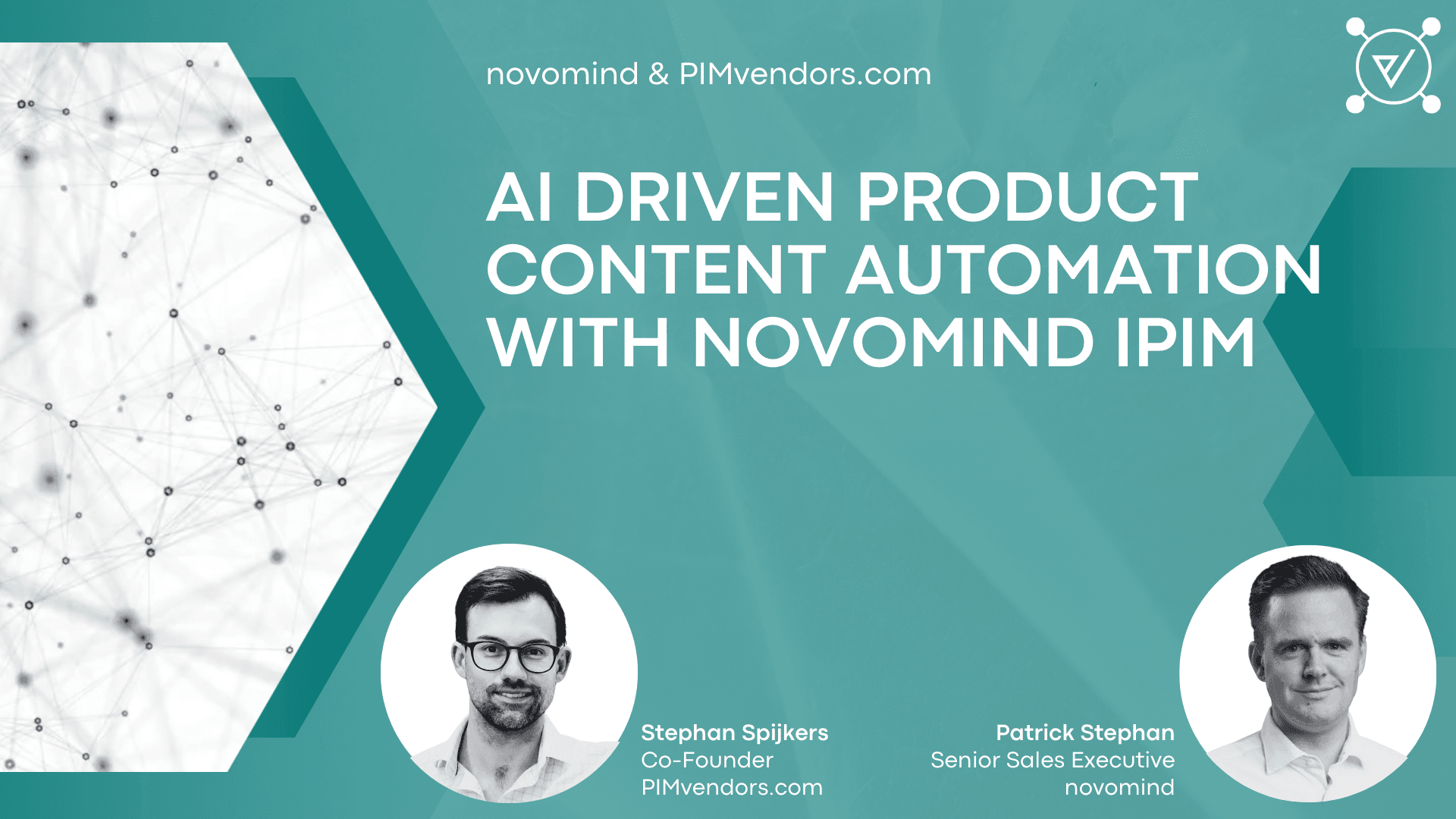In the era of e-commerce and multichannel retail, managing product information reliably and efficiently has become critical. The video interview delves into how AI-powered automation, particularly via novomind iPIM, is transforming product content workflows. In this article, we break down the key takeaways, expert reflections, and practical implications for brands, retailers, and digital commerce teams.
Speakers:
Stephan Spijkers – Co-Founder, PIMvendors.com
Patrick Stephan – Senior Sales Executive, novomind
Key Themes from the Interview
1. The role of AI in content automation
The speakers emphasize how AI models help enrich product data, detect inconsistencies, and fill content gaps automatically. Instead of manually editing thousands of SKUs, AI supports a scalable, faster process.
“AI becomes the engine behind consistency and speed — it spots patterns humans might miss.”
“We aim not to replace humans but to empower them — the machine proposes, the expert supervises.”
2. Challenges in adopting automation
While AI offers many benefits, the interview surfaces real-world hurdles:
- Data quality & “dirty data” — legacy systems often hold incomplete or inconsistent records, which must be cleaned before feeding into AI.
- Integration complexity — connecting PIM with ERP, CMS, marketplaces, and other systems poses technical challenges.
- Change management & trust — teams may hesitate to trust automated suggestions until the system proves reliable through pilot phases.
The experts suggest tackling these by starting small, iterating, and gradually expanding the scope.
3. The workflow: from raw data to omnichannel publishing
A practical outline of how a business might implement AI-driven content automation:
- Data ingestion — bring in product records from multiple sources (suppliers, internal catalogs, legacy systems).
- AI analysis & enrichment — the system analyzes existing attributes, identifies missing fields, proposes content (e.g., descriptions, tags, attributes).
- Human review & feedback — editors or product managers validate or correct AI proposals.
- Normalization & standardization — the system ensures consistent formats, units, naming conventions.
- Channel distribution — the enriched and approved product records are published to web stores, marketplaces, mobile apps, etc.
- Continuous monitoring & updates — when product data changes (price, specs, availability), the system propagates updates across channels.
4. Business benefits & ROI
According to the discussion, here are key gains:
- Faster time-to-market — new products or updates can be pushed live much faster.
- Improved consistency — fewer errors between channels, leading to better customer trust.
- Resource efficiency — less manual labor devoted to repetitive updates, allowing teams to focus on strategy, merchandising, creative work.
- Scalability — as the product catalog grows, the process remains manageable.
5. Real-world adoption & advice
The interview highlights that success depends on:
- Running a pilot phase with a subset of SKUs to validate the system’s proposals.
- Feedback loops: the system should learn from corrections made by humans.
- Clear KPIs: measure error rates, speed improvements, consistency metrics.
- Cross-functional collaboration: IT, marketing, product, operations must work together.
🔗 Explore more insights on PIMvendors.com


